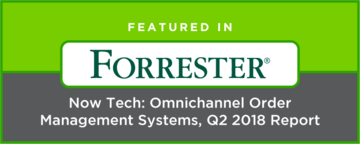The Shopify Plus retailer roster is full of inspiring stories of high growth merchants. While every merchant is using the same Shopify technology platform for their ecommerce storefront, their growth stories are all different. Different categories, different merchandising strategies, different marketing and pricing tactics.
As is the case for all other businesses, retailers have to adapt as they grow. Processes that work well at the $5mm annual revenue mark typically begin to break down as retailers approach doubling in size.
High growth typically causes order fulfillment and inventory management processes to buckle under the pressure of higher volume and more complex operations.
Following are the other common growth initiatives that can stretch fulfillment and inventory management processes within an organization – challenges that require a technology upgrade in order to scale.
Growth Initiative
Addition of new sales channels:
Marketplaces, Brick & mortar stores, Popup Stores
Challenges
Late Shipments and More Returns
-
- How will fulfillment centers manage inbound orders from multiple sales channels with varying service level requirements?
- How will marketing ensure that product information is consistent across channels, each with its own set of rigid format?
Growth Initiative
Addition of new warehouses and fulfillment centers
Challenges
More Stockouts or Capital Tied up in Overstock
-
- How will you intelligently route orders to the ideal fulfillment center? Which center has the most inventory? How to maximize the purchase and distribution of stock to maximize return on capital?
- How will you optimize inventory across multiple fulfillment centers? Can you automate this process?
Growth Initiative
Addition of new product categories and suppliers and products
Challenges
Slower Time to Market and Product Information Errors
-
- Will the old ways of onboarding suppliers and products scale?
- Are you going to take longer to add new products to all your sales channels?
- How will you forecast demand for products you haven’t previously sold? How will you decide how much inventory to purchase?
Growth Initiative
Sales and Volume Growth
Challenges
Slower Customer Service with Fewer First Contact Issue Resolutions
-
- How many systems must contact center reps log into in order to resolve customer questions?
- Can they view all orders, payments, promotions, pricing and past orders and returns history for the customer – across all channels and fulfillment centers — by logging into one system?
- How quickly can the Rep access all the vital info and is able to act with confidence to resolve the customer’s issue rather than escalate or have customer jump through phone trees?
Growth Initiative
Omnichannel Strategy
Challenges
Systems breakdown between Cross Channels and Data Inconsistency
-
- How will you enable customers to buy online and pickup/return in store?
- How will you ship from store with your current systems?
- How will CSRs handle multichannel customer requests?
Shopify Plus Inventory and Order Management Software by Pulse Commerce is purpose built to streamline each of these challenges, plus many others.
What is an Enterprise Order & Inventory Management Platform?
At it’s core, the platform keeps important data synchronized across commerce systems – ecommerce website, ERP, Accounting, CRM, Supplier Systems, etc. It maintains a real-time view of all orders, inventory, customers, products, pricing and promotions across all sales channels and fulfillment centers.
This real-time 360-degree view of the business, coupled with intelligent workflows, gives the order and inventory management system powerful capabilities that helps Shopify merchants grow with scale. The platform helps merchants:
-
- optimize inventory across fulfillment centers;
- orchestrate real-time, automated business decisions that ensure orders are fulfilled accurately and on time;
- synchronize vendor and product and pricing information across systems; and
- empower customer service representatives to resolve customer issues, regardless of the sales channel for the purchase
Shopify Plus and Pulse Commerce together are enabling mid-market merchants like us to deliver stellar omnichannel services and superior customer experiences while improving operational efficiency

Following are just 4 ways you can benefit from adding the Pulse Commerce Order and Inventory Management Platform to your Shopify ecommerce operations:
- Inventory Management and Optimization
Increase inventory turns by reducing stockouts and reducing overstocks. You’ll gain a real-time view of inventory across all websites, brick-and-mortar stores, warehouses (including Amazon FBA), and fulfillment centers. With that insight available to all of your systems, you can manage operations more efficiently.
- Allocate and track inventory across multiple locations.
- Track inventory turns and profitability by item, sku, or vendor to optimize purchasing.
- Use ‘Days of Stock’ reports to avoid stockouts.
- Distributed Order Management with Intelligent Order Routing
Ship from the ideal fulfillment center to ship faster, ship cheaper, or increase inventory turns. With knowledge of inventory levels at every location, the Pulse Commerce Order Management System (OMS) for Shopify can send new orders to the optimal fulfillment center. And merchants can choose their criteria:
- Ship faster:
- Sends order to the center closest to the customer.
- Order splitting – The OMS can split an order between 2 or more fulfillment centers to speed up delivery time or to facilitate drop-ship fulfillment.
- Optimize inventory:
- Send the order to the center least likely to run out of an item.
- Ship from a store that is sitting on too much stock.
- Product Information Management
Onboard new suppliers and products once, and easily synchronize your Shopify store with other systems.Imagine a streamlined onboarding process? Import a new product catalog without incident, edit product information in an intuitive interface, create sales, discounts, and special pricing using flexible pricing rules that accomodate various business objectives, and then syndicate the information to your Shopify ecommerce site, brick-and-mortar stores, and online marketplaces. What can be an error-prone distraction becomes a simple process. Better product information leads to higher conversions, and also cuts down on returns.
- Customer Service
Give contact center team members access to a single view of all orders, customers, inventory, products and promotions. Give your contact center the tools they need to quickly handle Shopify order and return inquiries. End the days of logging in to an order system, a CRM, and an inventory management software to resolve a single issue. To illustrate, consider a customer purchases an item online, and realizes afterwards that it’s the wrong size. The customer calls the contact center to modify the order. With an OMS, the CSR logs into a single system. Then:
- The CSR can look up the order by customer name, by phone number or by order #
- The CSR can modify the order, after first ensuring that the item is available in inventory
- The CSR can even offer the customer to pick up the modified order at a local store
Without an OMS, the CSR might have to log into more than one order system just to find the order. Then the CSR has to log into a separate inventory system to ensure the item is in stock prior to modifying the order. And, the offer to pick up in a store is near-impossible to manage.
We’ve just scratched the surface of the benefits of a Shopify Plus Order & Inventory Management platform. To learn more about how an Enterprise OMS can benefit Shopify Plus merchants, contact Pulse Commerce Sales to schedule your personalized 1-on-1 demo.
You can get a better sense for the financial benefits of an OMS by reviewing our Order Management System ROI Calculator. And, it’s prudent to know that all order and inventory management software are not created equal. To learn more about the downside of a “light” OMS, read, The 9 Deadly Sins of a Light Order Management System.

